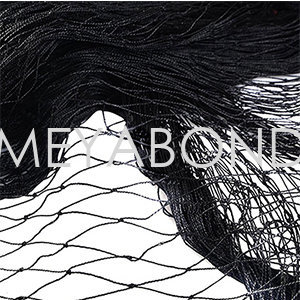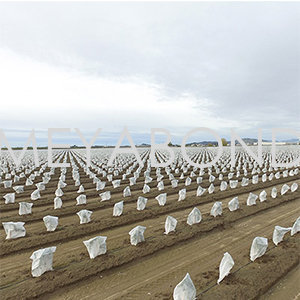The Essential Guide to Knitted Bird Nets in Agricultural Practices
When it comes to safeguarding crops in agriculture, knitted bird nets have emerged as a vital tool for farmers and horticulturists alike. These nets serve as a protective barrier, preventing birds and other pests from damaging plants while allowing light and air to penetrate, creating an optimal environment for growth. Understanding the functionality and advantages of knitted bird nets can significantly enhance your agricultural practices.
Knitted bird nets are made from durable materials that are designed to withstand various weather conditions while providing an effective barrier against birds. One of the primary benefits of using knitted bird nets is their ability to reduce crop loss. Birds can be particularly destructive to fruits, vegetables, and seedlings, and their presence can lead to substantial financial losses for farmers. By employing knitted bird nets, farmers can protect their investments and secure healthy harvests.
Another significant advantage of knitted bird nets is their lightweight and flexible nature. Unlike traditional nets, which can be cumbersome and difficult to handle, knitted bird nets are easy to install and maneuver. They can be draped over crops or set up in a framework, adapting to various planting styles and sizes. This adaptability makes them suitable for a wide range of agricultural applications, from small garden plots to large commercial farms.
In addition to protecting crops, knitted bird nets also play a role in promoting a more sustainable farming practice. They serve as a non-toxic method of pest control, reducing the need for chemical deterrents that can harm beneficial insects and the surrounding ecosystem. By utilizing knitted bird nets, farmers can achieve effective pest management while being mindful of environmental impacts.
Furthermore, knitted bird nets are designed to provide adequate ventilation and light penetration. This is particularly important for crops that require specific growing conditions. The open knit structure allows sunlight to reach the plants while preventing birds from gaining access. This balance is critical for maintaining healthy plant growth and maximizing yields.
Farmers considering knitted bird nets should also take note of their longevity. These nets are typically UV stabilized, meaning they resist degradation from sun exposure over time. This durability ensures that they can provide ongoing protection season after season, making them a worthwhile investment for agricultural operations.
In conclusion, knitted bird nets represent a practical and effective solution for protecting crops from avian threats. Their lightweight design, ease of installation, and eco-friendly pest management capabilities make them an indispensable asset in modern agriculture. By incorporating knitted bird nets into farming practices, growers can safeguard their crops, enhance productivity, and contribute to a sustainable agricultural future.
Knitted bird nets are made from durable materials that are designed to withstand various weather conditions while providing an effective barrier against birds. One of the primary benefits of using knitted bird nets is their ability to reduce crop loss. Birds can be particularly destructive to fruits, vegetables, and seedlings, and their presence can lead to substantial financial losses for farmers. By employing knitted bird nets, farmers can protect their investments and secure healthy harvests.
Another significant advantage of knitted bird nets is their lightweight and flexible nature. Unlike traditional nets, which can be cumbersome and difficult to handle, knitted bird nets are easy to install and maneuver. They can be draped over crops or set up in a framework, adapting to various planting styles and sizes. This adaptability makes them suitable for a wide range of agricultural applications, from small garden plots to large commercial farms.
In addition to protecting crops, knitted bird nets also play a role in promoting a more sustainable farming practice. They serve as a non-toxic method of pest control, reducing the need for chemical deterrents that can harm beneficial insects and the surrounding ecosystem. By utilizing knitted bird nets, farmers can achieve effective pest management while being mindful of environmental impacts.
Furthermore, knitted bird nets are designed to provide adequate ventilation and light penetration. This is particularly important for crops that require specific growing conditions. The open knit structure allows sunlight to reach the plants while preventing birds from gaining access. This balance is critical for maintaining healthy plant growth and maximizing yields.
Farmers considering knitted bird nets should also take note of their longevity. These nets are typically UV stabilized, meaning they resist degradation from sun exposure over time. This durability ensures that they can provide ongoing protection season after season, making them a worthwhile investment for agricultural operations.
In conclusion, knitted bird nets represent a practical and effective solution for protecting crops from avian threats. Their lightweight design, ease of installation, and eco-friendly pest management capabilities make them an indispensable asset in modern agriculture. By incorporating knitted bird nets into farming practices, growers can safeguard their crops, enhance productivity, and contribute to a sustainable agricultural future.
Key words:
Related News
CONTACT US
Email: sales8@meyabond.com
Tel: +8618911966213
No.3 Yard, ZhongHe Road, 100071,FengTai District, Beijing, China
Email: sales8@meyabond.com
Tel: +8618911966213
No.3 Yard, ZhongHe Road, 100071,FengTai District, Beijing, China
















